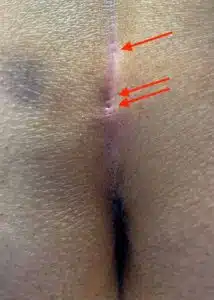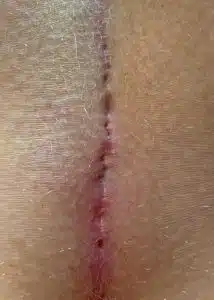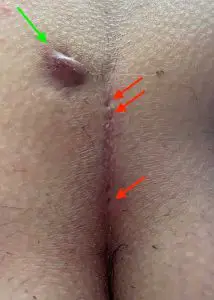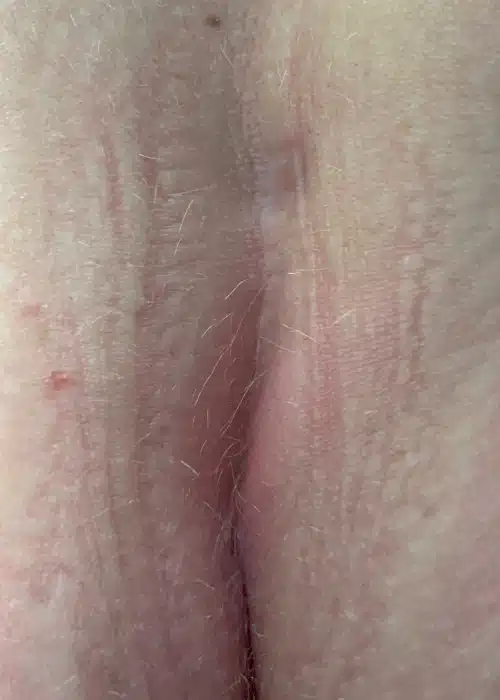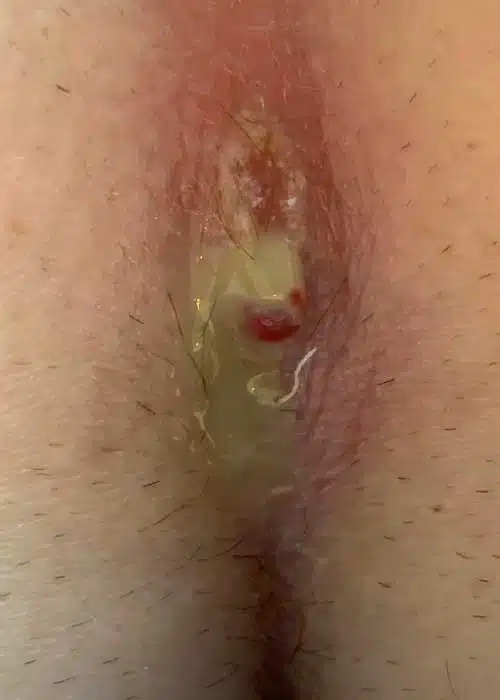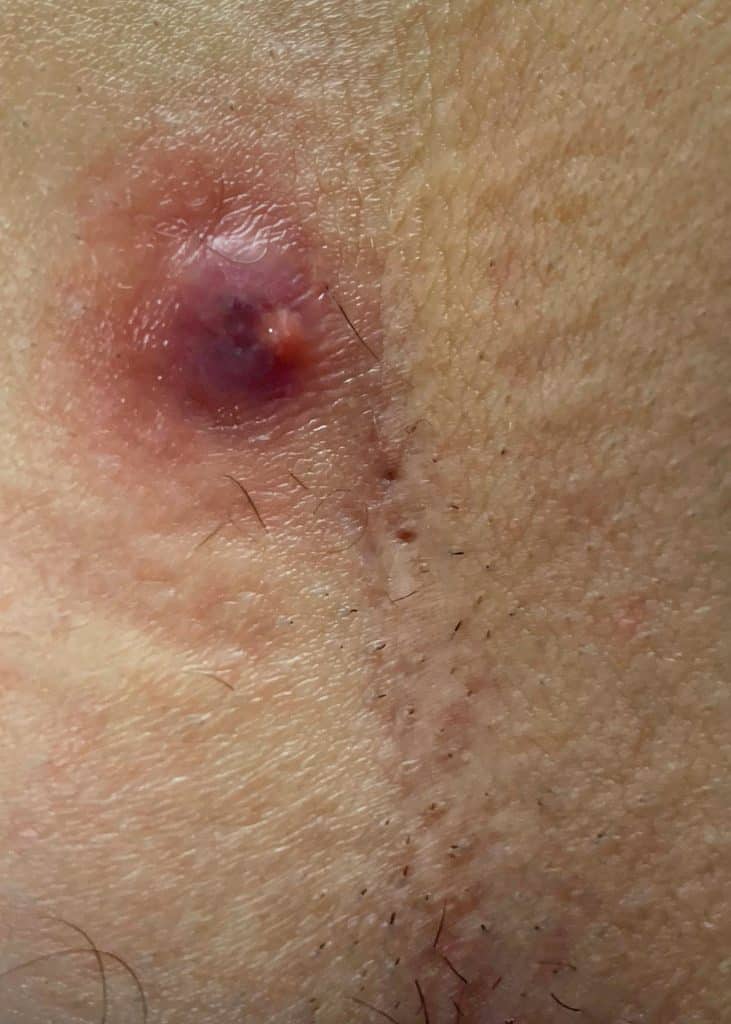1. pits: openings in the center line
Primary fistula = starting point of the fistula
Small, black dots or openings in the midline are characteristic signs of Pilonidal Sinus. These so-called "pits" or "pores" are often easily overlooked. Sometimes they are only visible after shaving and with magnification.
Occasionally, loose or broken hairs can be removed from these pits. Other pits contain a thick secretion of horny scales, similar to a blackhead.
The pits are the origin of the fistula and represent the structure to be removed during pit picking.
Secondary fistula = end point of the fistula
The fistula can break through the skin in the middle or also on the side, in most patients for an unknown reason on the left side, and empty outwards. With such an open fistula on the coccyx, the patient usually has no pain. Not all fistulas work their way to the surface; many ends are also blind under the skin.
This opening looks similar to a "pimple" and is often the first and only symptom that the patient notices. A red, slightly bleeding tissue (granulation tissue, amateurishly called "wild flesh") seems to ooze out of the opening.
More often than one might think, medical measures also focus on this eye-catching finding and neglect the actual starting point of the problem.
In our Picture gallery you can see how a Pilonidal Sinus can look like.
2. pain, hardening
The most common symptom is pain or a foreign body sensation when sitting.
This is particularly noticeable on an unpadded chair (school, lecture hall, training course, beer garden bench). One suspects that it is due to the uncomfortable furniture.
A recent fall on the coccyx suggests a contusion or bruise. A temporal connection between the first symptoms and a trauma is found disproportionately often.
You can also feel the hardening during sporting exercises (sit-ups, bench presses, floor exercises).
In the event of an inflammatory episode or pilonidal abscess, it can become so painful that you can no longer sit.
3. bump or asymmetry
Not always in the pilonidal sinus there is a clearly visible fistula opening.
The only sign may then be an asymmetry of the gluteal fold or a visible bump on the buttocks.
The fistula capsule can be felt as a hardening that feels like bone or cartilage in a chronic form that has existed for many years. The difference can be seen when comparing the left and right sides - bones would always be symmetrical!
So if you feel something but the doctor can't find anything, seek a second opinion if in doubt. Doctors who are rarely confronted with this problem are sometimes unaware of the discreet signs.
4. blood, pus, clear secretion
Some patients notice dampness, stains in the laundry or an unpleasant odor. The fistula secretion may be colorless and is often mistaken for profuse sweating.
Occasional bleeding may give the impression that blood is present in the stool. However, this bleeding comes from the granulation tissue that lines the fistula. This tissue contains many small, delicate blood vessels that can bleed easily.
Such bleeding is not dangerous. They are a sign that the body is trying to heal the wound. Healing processes require the supply of building materials, which are transported via the blood.
5. general signs of illness: Fever or fatigue
In rare cases, a severely inflamed Pilonidal Sinus can cause general symptoms such as fever or fatigue. However, it is very unlikely that an abscess on the coccyx will not be noticeable mainly due to pain, as this region is very sensitive.
However, if an abscess persists for several days, remains untreated and does not rupture on its own, it is possible for bacteria to be washed in, which can lead to fever and, in rare cases, blood poisoning. However, such complicated courses are rare.
Patients often ask whether a pilonidal sinus as a chronic inflammatory process has consequences for general health. To my knowledge, there are no reliable findings on this. However, it is known that even inflammation of the gums can increase the risk of a heart attack, so it is possible that untreated Pilonidal Sinus could be harmful to health in the long term.
Coccyx fistulas are not associated with chronic intestinal inflammation such as Crohn's disease.
Dr. Bernhard Hofer and Florian Liebl
Specialists in Visceral Surgery and Proctology - PartG mbB
Brienner Str. 13, D-80333 Munich

By loading the map, you agree to Google's privacy policy.
Learn more
Contact:
Monday to Friday
08.00 - 13.00
14.00 - 18.00
Saturday, Sunday, public holiday closed
Please also note our instructions in the title of this website and on our telephone announcement.
© 2024 Proctology Practice Munich


